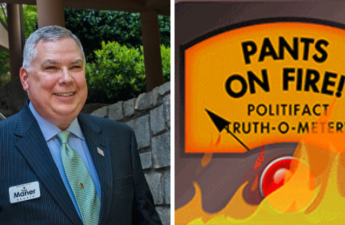
Another Halloween, another blackface controversy. This time, it’s at the University of Florida, where members of a fraternity dressed up as rappers for a “Rock Stars and Rappers”-themed party. Those involved have since apologized, claiming ignorance of history.
Here’s some of the history.
Blackface was used in 19th and early 20th century “minstrel shows.” These popular offerings featured white performers in blackface who sang, danced, and clowned around for the benefit of white audiences. They did not portray blacks so much as they parodied them by perpetuating stereotypes of stupidity and laziness. One of the most popular minstrels was Thomas Rice, who perfected the “Jim Crow” persona, a caricature that served to reinforce white supremacy. It’s no accident that the term “Jim Crow” went on to become the common term for segregation—the legal system implemented in the United States in the century after the Civil War to keep African-Americans down and distant.
Historian Donald L. Grant, in The Way It Was in the South—The Black Experience in Georgia, writes:
Minstrel shows carried negative Negro stereotypes down to the lowest level of popular culture. These acts probably originated on the plantation, where slaves entertained themselves and their masters. By 1769, Northern whites in blackface parodied drunken blacks to amuse other whites. Both blacks and whites in blackface developed this form of popular entertainment. The Brooks Negro Minstrels were organized in Macon in October 1861. To obtain permission to use the Macon concert hall, they had to donate the proceeds from the first performance to Confederate soldiers’ relief. Admission was fifty cents for whites and half that for “servants.”
After the Civil War, white actors in blackface would do cakewalks, “coon songs,” and “darkie” dialect jokes. They did not portray blacks; they played their stereotypes of blacks. The audiences, most of whom had little honest contact with blacks, often did not know the difference and assumed the caricatures accurately depicted blacks as brutish, lazy, stupid, and dishonest, but with a streak of cleverly dissembled cunning.
While blackface has been radioactive for more than a century, this knowledge has been slow to seep through to succeeding generations. Hence, our latest news story.
Nathan Crabbe of the Gainesville Sun reports:
A photo of University of Florida fraternity members wearing blackface at a Halloween party last week has brought criticism, apologies and a town hall meeting Thursday.
It isn’t the first time a racially insensitive Halloween costume has raised concerns at UF and beyond. Students at Ohio University conducted a campaign last year called “We’re a Culture, Not a Costume” to raise awareness of the issue.
“This comes up like clockwork every year around Halloween across the country at different colleges,” said Katheryn Russell-Brown, UF law professor and director of the Center for the Study of Race and Race Relations.
The issue gains significance at UF at a time when just 10 black students are among the 287 students entering the law school this fall, she said. The problem is not just that people would wear such costumes, she said, but that their friends would not say anything.
“What we’re talking about is not so much whether people can do this … but what message it sends and what kind of community we want to have,” she said.
Last week’s incident involved a Halloween party with a “rock stars and rappers” theme held off campus Wednesday by the UF chapter of the Beta Theta Pi fraternity. A photo was taken of two fraternity members wearing dark paint on their faces and bodies along with baseball caps, gold chains and sagging pants.
The photo was posted the next day on the Facebook page of the Gator chapter of the NAACP, along with the message that “the fact that this is seen as acceptable is where the problem lies!”
The national fraternity, chapter president and fraternity members who wore the costumes subsequently issued apologies.
Liked this post? Follow this blog to get more.



